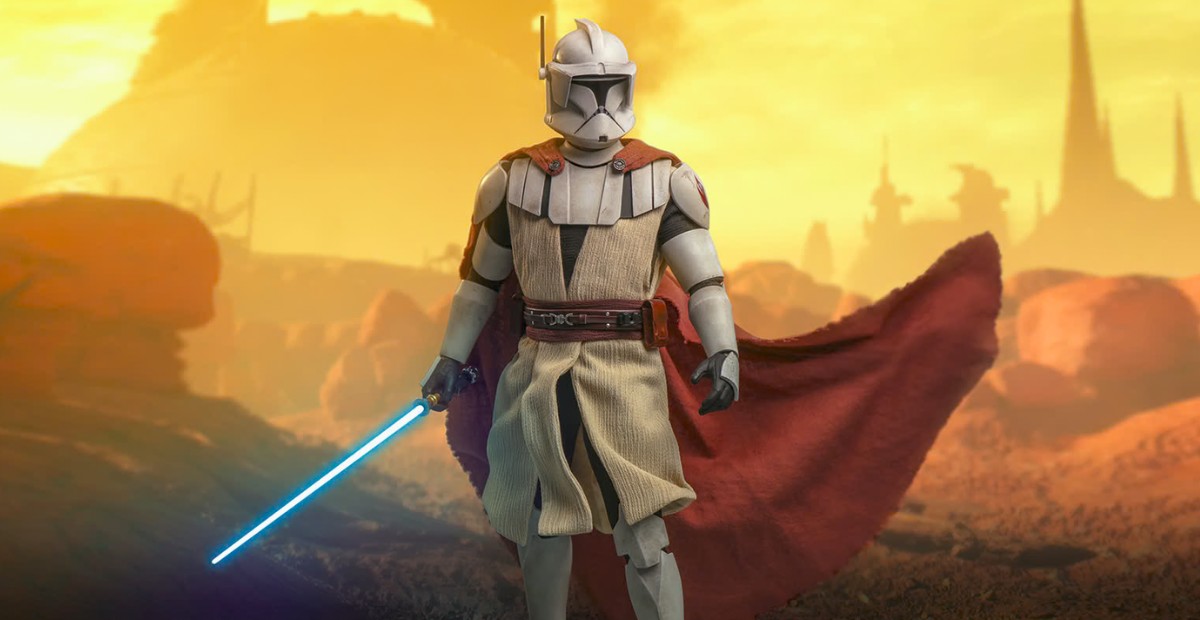When you think of Jedi, you probably see long robes, leather boots, and lightsabers—not heavy armor. Meanwhile, the Imperials show up in full gear: stormtrooper suits, officer uniforms, helmets, everything. So why didn’t the Jedi suit up the same way, especially during galactic war? The answer lies in what the Jedi were, how they fought, and how they wanted to be seen.
Armor Gets in the Way of How Jedi Fight
Jedi combat depends on speed, movement, and full-body flexibility. Their lightsaber style isn’t like clone troopers firing blasters from behind cover. It’s fast, close, and often involves flips, wide swings, and reacting to danger in the moment. Full armor would slow them down and limit their range of motion—especially around the arms, legs, and neck.
Even in The Clone Wars, Jedi like Obi-Wan and Anakin wore partial armor—just enough to show unity with the clones, but never full suits. Obi-Wan’s shoulder and forearm plates looked cool, but they left his movements free and didn’t block his vision or limit his connection to the Force.
In fact, Jedi rely more on deflecting blaster bolts and sensing danger through the Force than on blocking attacks with armor. That’s why helmets, which can limit hearing and vision, were rarely used.
Armor Didn’t Offer Enough Protection Anyway
In the Star Wars galaxy, most armor—besides rare materials like beskar—doesn’t do much against blaster fire. Clone and stormtrooper armor might help a little, but it rarely stops a direct hit. That’s why you still see troopers fall after being shot, even when fully armored.
For Jedi, the best defense was always their lightsaber and the Force. They could sense incoming fire, block it, and move fast enough to avoid getting hit at all. So wearing heavy gear that only slightly improved survival wasn’t worth the trade-off in mobility or awareness.
And in some cases, armor might even make things worse—making Jedi easier to hit or slowing their reaction time in tight combat.
Armor Doesn’t Fit the Jedi Identity
The Jedi weren’t soldiers by design. They were trained as peacekeepers—monks with lightsabers. Their robes symbolized their connection to the Force, their humility, and their role as guides and defenders of peace. Wearing full armor like the Empire would have made them look like just another military unit.
The contrast was clear: the Empire used uniforms and helmets to enforce discipline and erase individuality. The Jedi, by comparison, stood out in robes that reminded people they weren’t conquerors or enforcers—they were meant to help.
Mace Windu said it best in Attack of the Clones: “We are keepers of the peace, not soldiers.” Even during wartime, the Jedi tried to hold onto that image, even if they had to take up command roles.
Public Perception Mattered During the Clone Wars
At the start of the Clone Wars, Jedi wore more armor to match their troops and lead them in battle. It helped build trust with the clones and made sense during the early war effort. But as the war dragged on, the galaxy’s view of the Jedi began to shift.
People started seeing Jedi not as wise protectors, but as military generals. Their armor made that image stronger, and not in a good way. So midway through the war, many Jedi returned to traditional robes or wore only minimal armor. It was a subtle way to show the public—and themselves—that they weren’t just becoming another part of the Republic’s war machine.
You can see this shift in The Clone Wars series. By the final season, most Jedi wear less armor, especially when working outside the army or on personal missions.
Fun Fact: One Jedi Did Wear Space-Proof Armor
In the 2003 Clone Wars microseries (which isn’t part of the current canon but still loved by fans), Jedi Master Saesee Tiin wears full armor that lets him fight in space—without a ship or helmet. He flies out into zero gravity, leads a boarding mission in orbit, and defeats battle droids by hand. It’s a wild example of how the idea of Jedi armor has been explored in different ways across Star Wars history.

